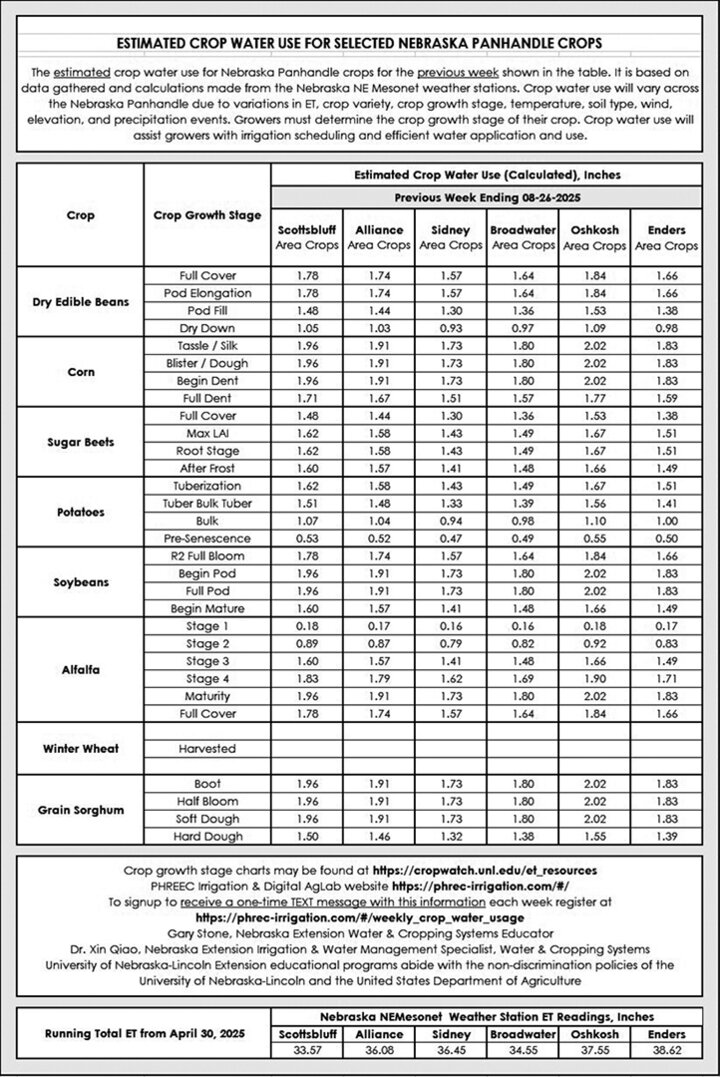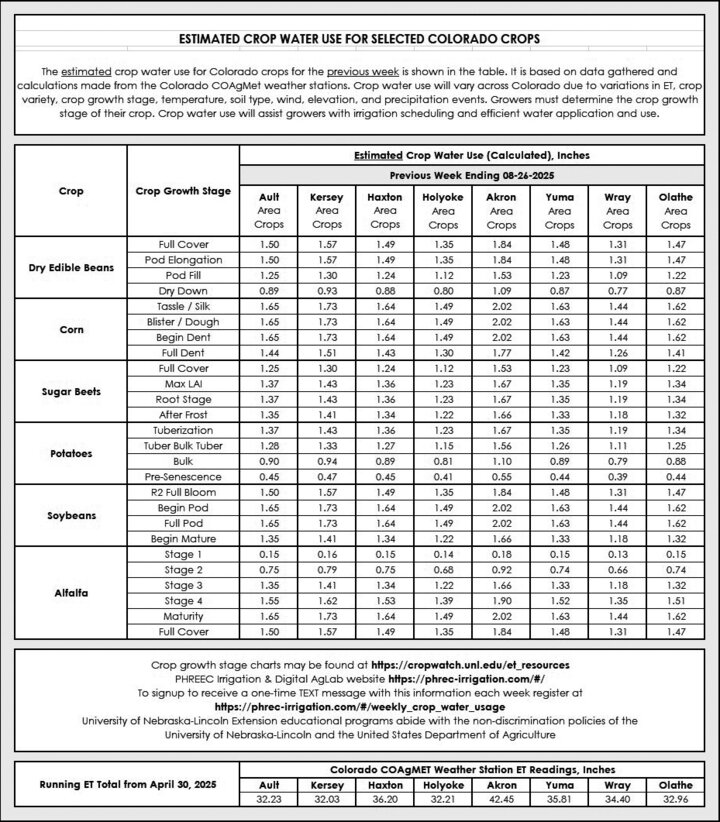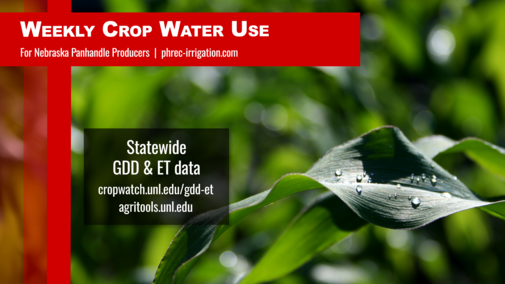The estimated crop water use for Nebraska Panhandle and northeast Colorado crops for the previous week is shown in the tables below. The tables are based on data gathered and calculations made by Gary Stone, Nebraska Extension educator, and Dr. Xin Qiao, extension irrigation and water management specialist, both based at the UNL Panhandle Research and Extension Center in Scottsbluff, Nebraska.
Crop water use will vary across the Panhandle due to variations in ET, crop growth stage, temperature, soil type, wind and precipitation events. Crop water use will assist growers with irrigation scheduling and efficient water application and use.
Register online to receive a weekly text message with the table information.
More Resources
- Crop growth stage charts
- For statewide growing degree days and evapotranspiration data, see the CropWatch GDD/ET tool.
- The AgriTools App can also provide easy access to location-specific climate and weather information to the agricultural industry in Nebraska.
- PHREEC Irrigation and Digital AgLab website



